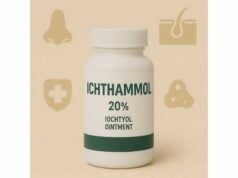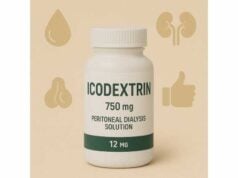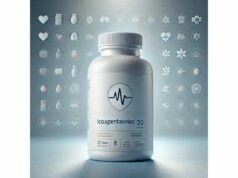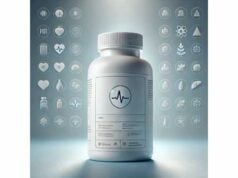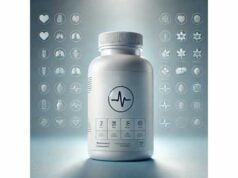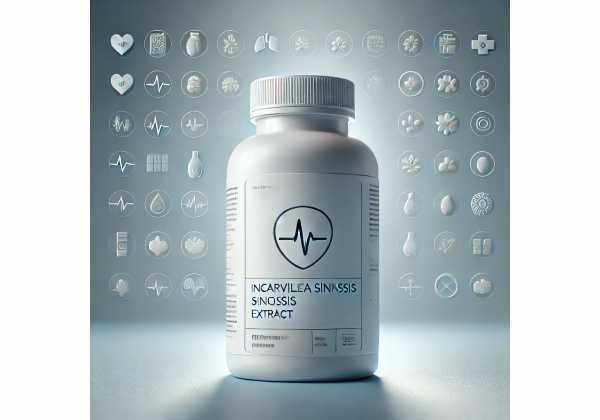
Incarvillea sinensis extract comes from the trumpet-flower plant long used in East Asian medicine for “wind-damp” pain, stiff joints, and bruises. Modern lab studies focus on its alkaloid incarvillateine, a non-opioid compound that appears to act through the body’s adenosine signaling rather than opioid receptors. Early animal work suggests potential for inflammatory and neuropathic pain, with less effect on normal sensation. That said, human clinical trials are lacking, and some data indicate risks for people with seizure disorders. If you’re investigating botanical options for pain support, this guide brings together what’s known—and what isn’t—so you can weigh benefits, practical use, and safety with a clear view of the evidence.
Fast Facts
- May ease inflammatory and neuropathic pain in animal models through adenosine pathways.
- Not an opioid; effects appear independent of opioid receptors.
- Typical supplemental range: 200–600 mg/day of concentrated extract; start low and increase cautiously.
- Safety caveat: may aggravate seizures; avoid if you have epilepsy or a history of seizures.
- Pregnant or breastfeeding individuals and those on sedatives should avoid use unless a clinician agrees.
Table of Contents
- What is Incarvillea sinensis extract?
- Does it actually work for pain?
- How do you use it day to day?
- How much should you take?
- Side effects and who should avoid it
- What the research says and where the gaps are
What is Incarvillea sinensis extract?
Incarvillea sinensis is a hardy flowering plant native to northern China and parts of Central Asia. In traditional practice, its root and aerial parts have been used for pain and stiffness, minor injuries, and certain “rheumatic” complaints. Modern extracts standardize or enrich the alkaloid fraction—most notably incarvillateine—alongside related compounds (e.g., incarvine derivatives). While “extract” is a catch-all term, commercial products typically specify a ratio (such as 10:1 or 20:1) that indicates how much raw plant material was used to make the extract powder.
At a molecular level, the star compound, incarvillateine, belongs to a small group of monoterpene alkaloids with unusual cyclobutane “truxillic acid–like” cores. This structure has attracted medicinal chemists because it behaves differently from opioids and NSAIDs. In controlled animal experiments, incarvillateine reduces pain behaviors triggered by inflammation or nerve injury, yet leaves normal pain sensation largely intact—an appealing profile if it translates to humans. Importantly, the analgesic effects appear to stem from interactions with adenosine receptors (proteins that modulate nerve signaling and inflammation) rather than the opioid system. That mechanistic distinction matters: it hints at a route to pain relief with a lower risk of opioid-class adverse effects.
It’s also why responses vary. The adenosine system influences blood flow, heart rate, sleepiness, and neuroinflammation. Compounds that nudge this system can ease pain in certain contexts and cause sedation or motor suppression in others. Incarvillateine has shown both sides of that coin in preclinical work—another reason to treat human use cautiously.
Bottom line: Incarvillea sinensis extract is a promising but still experimental botanical for pain support, driven by a unique alkaloid chemistry that works through adenosine pathways rather than opioids. Until human trials clarify benefits and risks, a careful, conservative approach is prudent.
Does it actually work for pain?
Short answer: there’s encouraging animal data, but no robust human clinical trials yet. In multiple mouse models, incarvillateine dampened “pathological” pain—pain from inflamed tissue or nerve injury—while leaving normal sensation and motor function mostly unchanged at effective doses. Researchers observed benefits in models of inflammatory pain (e.g., complete Freund’s adjuvant) and neuropathic pain (e.g., spared nerve injury and chemotherapy-induced neuropathy). Reversal experiments provide a mechanistic clue: adenosine receptor antagonists blunt or block incarvillateine’s effects, while opioid antagonists do not. That pattern supports an adenosine-mediated, non-opioid mechanism.
Why might adenosine signaling help? Adenosine is a neuromodulator that the body releases during stress and inflammation. Activating certain adenosine receptor subtypes can reduce the release of excitatory neurotransmitters, calm overactive pain pathways in the spinal cord, and temper inflammatory signaling by immune cells and glia. Several research groups are pursuing A1 and A3 receptor–targeted drugs for chronic pain for exactly these reasons. Incarvillateine seems to engage this same system—potentially as a “noncanonical” modulator rather than a direct, high-affinity agonist.
However, two caveats temper the enthusiasm:
- Motor and arousal effects: Some experiments reported motor suppression at doses close to those that reduced pain behaviors. While not universal across studies, this suggests a narrow functional window for certain individuals.
- Seizure risk signals: Separate data indicate incarvillateine can inhibit GABAA receptor currents in neurons and worsen seizure activity in animal models. This is a red-flag for anyone with epilepsy or a history of seizures.
Without controlled human trials, we can’t say whether the animal results predict real-world relief, who would respond, or how benefits balance against side effects. If you’re considering Incarvillea as a personal experiment for difficult pain, it’s essential to involve a clinician—especially if you take sedatives, have neurologic conditions, or manage cardiovascular issues.
Practical takeaway: Incarvillea sinensis extract plausibly eases certain pain states via adenosine pathways rather than opioids, but human evidence is absent and seizure-related concerns exist. Treat it as investigational.
How do you use it day to day?
Because there’s no clinical standard, use centers on conservative, structured self-testing with medical oversight. The goals are to minimize risk, detect sensitivity early, and learn whether it meaningfully helps your specific pain pattern.
1) Choose a transparent product.
Look for a reputable brand that states: plant species (Incarvillea sinensis), plant part (usually root), extraction ratio (e.g., 10:1, 20:1), and independent testing for identity and contaminants. Avoid blends where the Incarvillea contribution is unclear.
2) Start with “low and slow.”
Begin at the bottom of a typical supplemental range (e.g., 100–200 mg/day of a concentrated extract) and hold for 3–5 days before making any change. Many people notice either nothing or mild sedation during this period—both are informative. If tolerated and no benefit emerges, consider a small, stepwise increase every 3–5 days. Do not escalate quickly, and do not combine first trials with other new pain agents.
3) Time it for your pattern.
- Inflammatory flares or evening pain: A single evening dose may be more acceptable if drowsiness occurs.
- Neuropathic pain with daytime impact: Split doses (morning and late afternoon) can smooth effects—provided you have already tolerated a single dose without sedation.
4) Track objective signals.
Use a simple daily log: pain score (0–10), activity level, drowsiness, dizziness, mood/irritability, and any unusual sensations (e.g., muscle twitching, aura). Ask someone close to you to spot changes in alertness or coordination during the first week.
5) Set clear “stop rules.”
Stop immediately and contact a clinician if you experience aura, myoclonic jerks, unusual confusion, severe dizziness, palpitations, or a seizure. Also stop if pain relief is not noticeable after a methodical, well-tolerated trial—continuing “just in case” increases risk without evidence of benefit.
6) Don’t stack with sedatives or seizure-threshold–lowering agents.
Avoid first trials if you take benzodiazepines, barbiturates, certain sleep medicines, muscle relaxants, or if you drink heavily. Be cautious with other botanicals that cause drowsiness.
7) Respect washout periods.
If you’re also experimenting with caffeine for alertness or headaches, be aware caffeine is an adenosine receptor antagonist and might blunt perceived effects. Keep a consistent caffeine pattern across your Incarvillea trial so you aren’t changing two variables at once.
8) Pair with non-drug supports.
Adenosine biology interacts with sleep, recovery, and inflammation. Sleep hygiene, gentle mobility, pacing, and anti-inflammatory diet habits can all reinforce or reveal whether the extract truly helps.
Bottom line: Day-to-day use should resemble a small, single-agent N-of-1 trial with slow titration, careful observation, and a low threshold to stop if adverse effects appear.
How much should you take?
There is no established therapeutic dose in humans. Preclinical studies administered incarvillateine (the isolated alkaloid) by injection in animals at milligram-per-kilogram levels, which cannot be translated directly to oral human dosing of crude plant extracts. In consumer products, “Incarvillea sinensis extract” usually refers to a concentrated powder (e.g., 10:1 or 20:1). Given the absence of clinical dosing standards, the safest approach is a conservative, staged plan:
Suggested staging for concentrated extracts (e.g., 10:1–20:1):
- Week 1 (tolerance check): 100–200 mg once daily with food.
- Week 2 (response check): If no sedation, consider 200 mg twice daily (morning and evening).
- Do not exceed: 600–800 mg/day without clinician guidance. Some manufacturers list up to 1,000 mg/day as a maximum for 20:1 powders; given seizure concerns, a stricter ceiling is reasonable for self-care.
- Elderly or low body mass: Halve the starting dose (e.g., 50–100 mg/day) and titrate more slowly.
- Medication overlap: If you take sedatives, anticonvulsants, or drugs affecting heart rhythm, do not self-titrate—discuss with your prescriber first.
If using crude herb (decoction or granules): Traditional texts don’t provide modern, standardized grams-per-day guidance specific to Incarvillea sinensis. If a licensed practitioner prescribes a formula containing Incarvillea, follow that personalized dose and preparation method exactly; do not substitute with over-the-counter extract amounts.
Titration rules of thumb:
- Increase only if the prior dose produced no drowsiness, disequilibrium, or mood changes.
- Hold each new dose for 3–5 days before adjusting again.
- If any neurologic warning sign appears (see Safety section), stop and do not re-challenge until cleared by a clinician.
When to stop even if it seems “safe”:
If, after 2–3 weeks of careful titration within conservative limits, your average pain score hasn’t improved by at least 1–2 points (on a 0–10 scale) or daily function hasn’t improved in a meaningful way, discontinue. “No clear benefit” is an outcome—it keeps your regimen simpler and safer.
Remember: dosing guidance here is precautionary and intentionally conservative because human efficacy and safety have not been established. If you’re under the care of a professional trained in Chinese herbal medicine, follow their advice over any general guidelines.
Side effects and who should avoid it
Likely and dose-related effects (based on preclinical data and user reports):
- Drowsiness or slowed reaction time. This aligns with adenosine pathway engagement and has been observed near analgesic doses in animal work.
- Dizziness or “heavy-limb” sensation. Usually transient but signals that your current dose may be too high.
- Gastrointestinal upset. Nausea or stomach discomfort can occur with concentrated extracts; taking with food may help.
Serious concerns (require medical guidance or avoidance):
- Seizure risk: Laboratory studies indicate incarvillateine can inhibit GABAA receptor currents and exacerbate seizures in animal models. Anyone with a seizure disorder, a prior unprovoked seizure, or on medicines that lower the seizure threshold should avoid Incarvillea sinensis extract.
- Interactions via sedation: Combining with benzodiazepines, barbiturates, sedative-hypnotics, certain muscle relaxants, or alcohol increases accident risk. Avoid concurrent first trials.
- Cardiovascular cautions: Adenosine receptor modulation can influence heart rate and blood pressure. If you have bradyarrhythmias, hypotension, or you use drugs that affect atrioventricular conduction, do not self-experiment.
- Pregnancy and lactation: Safety is unknown. Avoid unless a qualified clinician specifically recommends otherwise.
- Children and adolescents: No data to support use.
Allergies and sensitivities:
Incarvillea belongs to the Bignoniaceae family. Cross-reactivity with other family members is not well documented, but anyone with a history of plant-extract hypersensitivity should approach cautiously.
Practical safety tips:
- One change at a time: Don’t add other new sedating agents while trialing Incarvillea.
- Driving and machinery: Avoid if you feel drowsy or slowed.
- Caffeine timing: Caffeine antagonizes adenosine receptors and may blunt perceived effects; keep intake consistent.
- Stop rules: Aura, muscle jerks, unusual confusion, severe dizziness, palpitations, or any seizure-like activity are immediate stop signs—seek medical evaluation.
Bottom line: treat Incarvillea sinensis extract like an investigational adjunct with real neurologic cautions, especially for anyone with seizure risk or on sedatives.
What the research says and where the gaps are
What’s reasonably supported:
- Adenosine pathway engagement: Across studies, incarvillateine’s antinociceptive effects are attenuated by adenosine receptor antagonists, while opioid antagonists have little impact. This positions Incarvillea as a non-opioid analgesic candidate in theory.
- Efficacy in animal pain models: Inflammatory and neuropathic pain behaviors are reduced in several well-established rodent models, with minimal effect on normal sensation at effective doses.
- Medicinal chemistry interest: The unusual truxillic acid–like core has inspired synthetic analogs, some with improved potency in preclinical tests.
What’s mixed or concerning:
- Motor suppression and sedation: Some experiments noted decreased locomotor activity at analgesic doses, signaling a potentially narrow therapeutic window for certain use-cases (e.g., daytime function).
- GABAA inhibition and seizures: Independent work shows incarvillateine can inhibit GABAA currents and worsen seizure activity in animals, independent of adenosine antagonists. This is a major translational caution.
What’s missing:
- Human pharmacokinetics: We don’t know how incarvillateine from oral extracts is absorbed, metabolized, or how it distributes in human tissues.
- Dose-response in people: No randomized controlled trials, no formal dose-finding studies, and no standardized extract specifications have been published.
- Drug interaction mapping: Adenosine pathway crosstalk with common medications (sedatives, stimulants, cardiovascular agents) hasn’t been characterized for this plant extract.
What would move the field forward:
- Phase 1 safety and PK studies using a standardized extract with quantified incarvillateine content.
- Small, mechanism-enriched trials in well-phenotyped pain cohorts (e.g., chemotherapy-induced neuropathy), with biomarkers of adenosine signaling to identify responders.
- Comparative work versus low-dose adenosine receptor–modulating drugs to clarify where Incarvillea fits in a modern, non-opioid analgesic toolkit.
- Neuro-safety screening focused on seizure threshold, GABAergic function, and cognitive effects across dose ranges.
Practical conclusion: The science justifies curiosity and careful preclinical development—but not casual, high-dose self-use. If you choose to trial it, do so at low doses, with clear goals, and stop if you don’t see meaningful benefit.
References
- Antinociceptive effects of incarvillateine, a monoterpene alkaloid from Incarvillea sinensis, and possible involvement of the adenosine system 2015 (RCT/Preclinical)
- Incarvillateine produces antinociceptive and motor suppressive effects via adenosine receptor activation 2019 (Preclinical)
- Natural product incarvillateine aggravates epileptic seizures by inhibiting GABA_{A} currents 2019 (Preclinical)
- Adenosine receptors: Emerging non-opioids targets for pain medications 2022 (Review)
- Alkaloids from the medicinal plant Incarvillea sinensis: Molecular diversity, synthesis, pharmacological properties and mechanism of action 2025 (Review)
Medical Disclaimer
This article is for educational purposes only and is not medical advice. Incarvillea sinensis extract has not been established as safe or effective for any health condition in humans. Do not start, stop, or change any medication or supplement based on this information without talking with a qualified healthcare professional who knows your medical history. If you are pregnant, breastfeeding, have a seizure disorder, heart rhythm issues, or take sedative medicines, discuss risks with your clinician before considering any trial.
If you found this helpful, consider sharing it on Facebook, X (formerly Twitter), or your favorite platform, and follow us for more evidence-based guides. Your support helps us keep producing high-quality, independent content.

